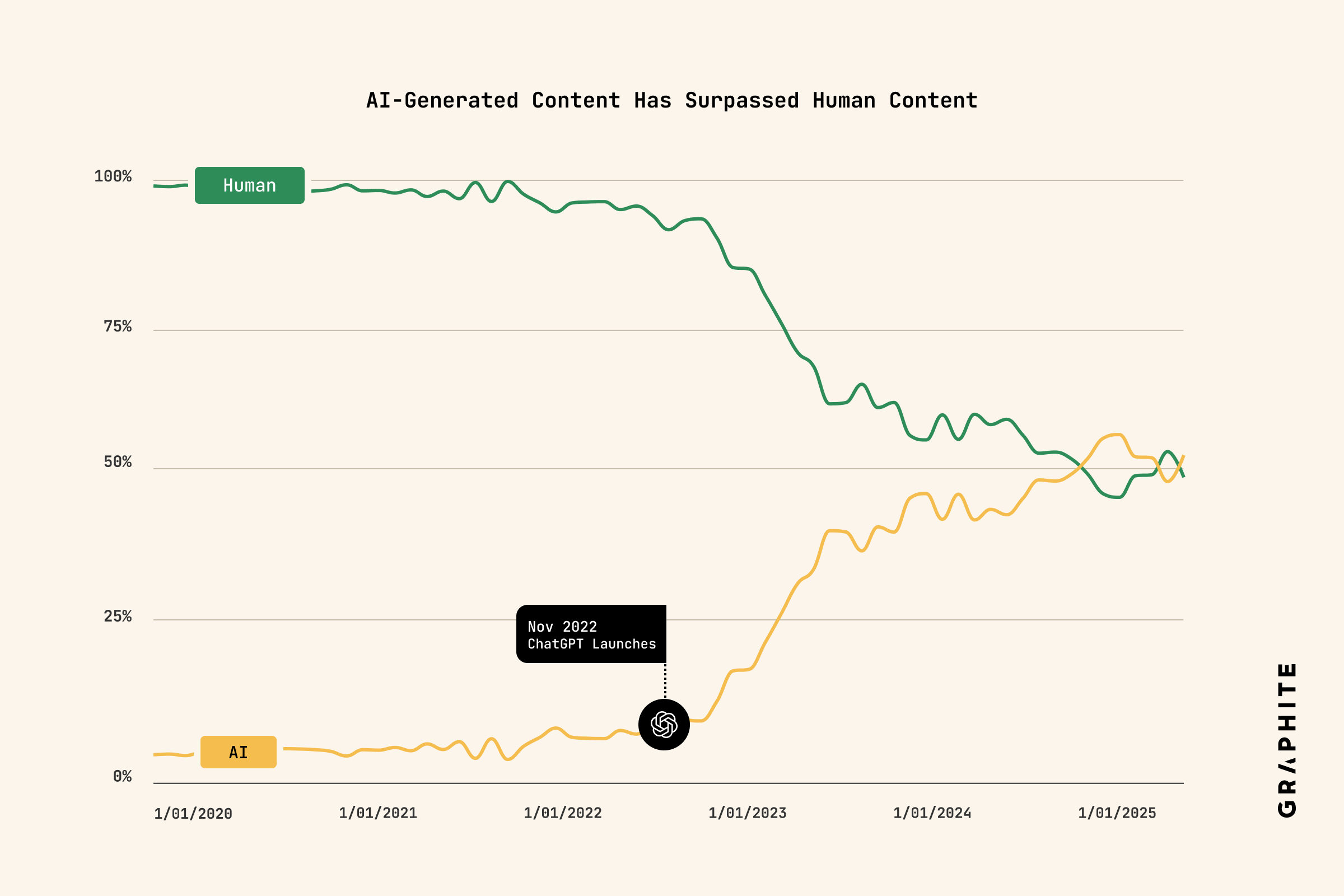AI Content Now Dominates the Web: Inside the Surge of Machine-Written Articles

AI Content Now Dominates the Web: What the Numbers Reveal
Staggering Growth of Machine-Written Articles
Artificial intelligence has transformed digital publishing at an unparalleled pace. Data shows a dramatic expansion in the presence of automated writing systems across digital platforms. Since late 2022, the landscape shifted as new generative text models became widely accessible, driving an exponential rise in machine-authored publications. Measured across thousands of public documents, the proportion of automated articles has climbed sharply, briefly outpacing human-crafted pieces.
At the center of this transformation is an unprecedented surge that occurred in less than 12 months. The ease of deploying language models and the sheer volume they produce contributed to automated texts making up the majority of online articles. By mid-2025, this method of content creation has exceeded previous norms, marking a notable inflection point for publishers, marketers, and search strategists.
This new reality is not limited to niche or technical publications. The wave includes vast arrays of news, guides, product descriptions, financial analyses, and entertainment writing. Tools responsible for automated publishing have become indispensable fixtures in a growing number of editorial workflows as adoption accelerates, especially after proven advances in model quality and scalability.
Inside the Measurement: Scale and Method
Understanding this shift requires a look at the technical process behind the analysis. The volume of publications was quantified by examining a random, representative sample of open web articles in the English language, focusing on recent years. Precise computational techniques were used to detect stylistic markers associated with automated writing, segmenting publications by their respective origins. This involved advanced AI language identification on discrete fragments of text, ensuring scalable and objective classification.
The scope of the investigation was tightly controlled, omitting restricted materials and focusing on content freely accessible to the public. This methodology provides clarity on the real output from generative models as opposed to traditional editorial workflows. While results cannot be generalized for every digital corner, the scale and rigor of the analysis leave little doubt about the systemic change sweeping the information economy.
Such findings underscore the impact of automation in digital production pipelines. With nearly half of fresh articles authored by computational models, this shift carries profound implications for discoverability, search engine performance, and audience trust. Fluctuations in growth reflect both technological innovation and a stabilization of patterns as markets adapt to a new equilibrium.
Machine Output: Abundance vs. Authority in Search Rankings
The tidal wave of automated publishing raises urgent questions about quality, relevance, and user experience. In search environments, algorithmic systems continue to prioritize authenticity, verifiable expertise, and originality when serving top results to users. Even as automated texts proliferate, search leaders reward content that demonstrates clear authorship, robust citing, and exclusive insights over volume alone.
Despite the quantitative surge, expert analysis reveals that most highly-ranked pages across major search platforms remain the product of human judgment, professional editing, and detailed research. This reflects ongoing efforts to anchor information discovery on reliability and transparency rather than mechanical reproduction. As algorithms evolve, unique data, direct attribution, and critical analysis remain central to visibility and engagement.
For marketers, publishers, and businesses, the lesson is clear: scaling content output is not a substitute for substantive value. Building authority and trust relies on maintaining rigorous source evaluation, providing actionable insight, and adopting adaptive strategies that respect evolving search trends. Navigating this new era involves blending the efficiency of automation with the discernment of experienced editorial control, ensuring audiences and algorithms recognize genuine expertise.
SEO: Navigating the Automated Content Revolution
Organizations face new challenges in adjusting digital strategies to the proliferation of algorithmically authored material. The rise of machine-made pages has sparked competition for audience attention and for favorable positioning within search interfaces. As publishers integrate computational tools, the importance of aligning with visibility best practices grows, including semantic optimization, structured data, and strategic keyword integration.
Modern optimization increasingly accounts for how platforms interpret automated language characteristics and prioritize trustworthy information. Successful strategies involve not only quantity but also contextual depth, clarity, and alignment with user search intent. Monitoring changes in search algorithms and content discovery models ensures that sites are not eclipsed by generic outputs or penalized by inappropriate automation signals.
In this evolving ecosystem, staying ahead means leveraging technology for efficiency while not losing sight of foundational SEO principles. Unique expertise, data-backed conclusions, and transparent attribution remain vital signals for search algorithms. Brands and creators seeking sustained relevance will continue to blend rapid production capabilities with meticulous editorial standards to meet both technological and human expectations in the digital marketplace.
Conclusion: The Path Forward in a Machine-Written World
The dominance of automated publishing marks a turning point for digital communication and information management. While computational models now drive the lion’s share of new articles, maintaining authority in competitive search environments depends on more than sheer abundance. Decision-makers must track technical developments, adhere to transparency protocols, and actively shape their content strategy to excel in an era defined by both innovation and discernment.
